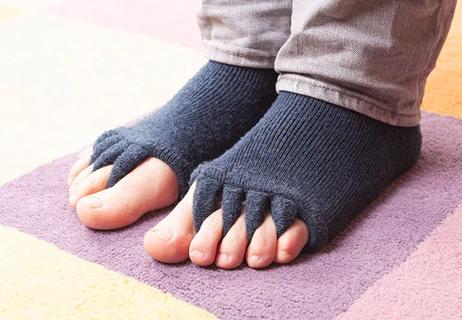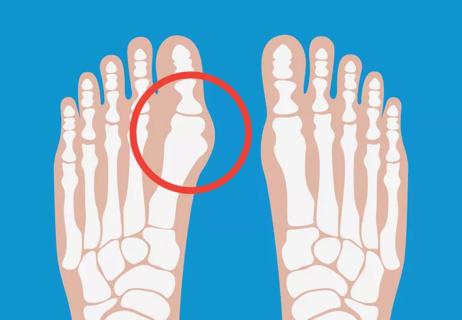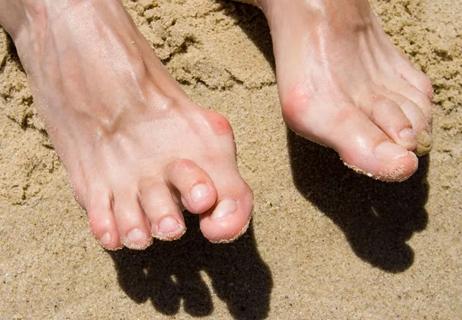Some things you find in your house have antifungal properties — but that doesn’t mean they’ll clear your toenail fungus

Toenail fungus isn’t the prettiest thing to look at. But it’s also nothing to be ashamed of. It’s extremely common, especially as we get older.
Advertisement
Cleveland Clinic is a non-profit academic medical center. Advertising on our site helps support our mission. We do not endorse non-Cleveland Clinic products or services. Policy
While these infections can be stubborn, they’re treatable. But the “how” might not be as simple as the internet makes it seem. Truth is, home remedies are rarely up to the task.
We asked family medicine physician Josue Limage, MD, about five common home remedies for toenail fungus. Dr. Limage discusses the limitations of these options — and shares some better ones.
Time for some radical honesty: The best remedies for toenail fungus aren’t sitting in your pantry. They’re at the pharmacy.
Both prescription and over-the-counter options are more likely to clear your infection than a home remedy is. Popular DIY fixes have little science behind them. And they take a long time to work, if they work at all.
To top it off, toenail fungus is contagious. You can spread it to other areas of your body. Other people can catch it from you. And it has a nasty habit of coming back, no matter how you treat it.
“Even if your nail clears up after treatment with prescription medication, fungal infections in the nails have a tendency to recur, especially if you tend to get these types of infections,” reports Dr. Limage.
If you use home remedies or even over-the-counter treatments, the likelihood of the fungus coming back is even higher.
Advertisement
If you aren’t sure whether or not it’s safe to treat your toenail fungus at home, Dr. Limage recommends speaking to a healthcare provider or starting with over-the-counter fungal treatments instead.
A quick internet search will yield a long list of home remedies for toenail fungus. It includes everything from propolis extract to ozonized sunflower oil.
But let’s be real: Most of the items on those lists aren’t just lying around your home. And if you have to go out shopping for a toenail fungus remedy, it makes more sense to get an over-the-counter treatment that’s backed by solid scientific evidence. Or — better yet — see a provider.
Common home remedies include:
Toenail fungus isn’t usually painful or dangerous. So, some people try to experiment with home remedies and over-the-counter products for a few months before getting proper medical treatment. Dr. Limage recommends skipping the DIY treatments altogether, regardless of how healthy you are.
But certain people have a greater risk of serious complications from toenail fungus, including a bacterial infection called cellulitis. If you’re one of them, going the home remedy approach could be dangerous. See your provider if you have symptoms of toenail fungus and:
Many cases of toenail fungus don’t require a trip to the doctor’s office. But that doesn’t mean you shouldn’t treat them.
“The greatest danger of not treating toenail fungus is that it can spread to other parts of the body, such as the hands and groin,” Dr. Limage says. In rare cases, a fungal infection of your toenail can cause serious damage or complications, like a foot ulcer or a bacterial infection.
Toenail fungus isn’t a condition most people lose sleep over. But it’s still important to pay close attention to your symptoms. Make an appointment with a provider if:
Advertisement
You should also alert a provider if you’re noticing significant changes to the shape, color or texture of your toenail.
“It’s important to be aware that there are other diseases that can cause nail changes,” Dr. Limage says. “For example, we see things like squamous cell skin cancers in the nail beds and even melanomas, which have a brownish or blackish discoloration.”
According to Dr. Limage, the best treatment for fungal nail infections is a prescription medication that you take every day for two to three months. Topical antifungals are a good backup option. Depending on your circumstances, you may even be a candidate for laser or phototherapy.
Advertisement
Learn more about our editorial process.
Advertisement

Wearing shoe inserts, maintaining a healthy weight and using cold or heat therapy may give you relief

Toe spacers and separators can add some comfort, but they’re not a fix-all

Injuring a toe is painful, but is it a serious problem? Find out when to see a doctor and what to do to help your toe heal at home.

The short answer from an orthopaedic surgeon

Understanding hammertoe, mallet toe and claw toe

If the area is bleeding a lot or the wound is near your face or genitals, you likely need a specialist’s care

At-home treatments and lifestyle changes may help ease the symptoms and improve the appearance of varicose veins — but they aren’t a cure

Lots of things can activate the herpes simplex virus, from the common cold and cold weather to cracked skin and cosmetic procedures

Babies can get congested easily, but you can calm their cough by keeping them hydrated, using nasal drops and running a humidifier

Weight loss may cause loose, sagging skin and muscle loss to your rear

Several conditions, like vitiligo and fungal infection, can cause a loss of pigmentation, leading to white spots or patches on your skin